EDITOR’S NOTE: It’s a holiday tradition, and one that I’m not quite ready to part with. Let’s celebrate by running one of my favorite COMICS 101 columns of all time, a Column from Christmas Past from 2003. After all, to quote Crow T. Robot, “There’s no tradition like a new tradition.” So, grab a seat by the tree, turn up the Christmas music, and settle in as we take a tour through the Christmases Past of a few characters that readers of this column over the years should find familiar…
I wish you a hopeful Christmas
I wish you a brave new year
All anguish, pain and sadness
Leave your heart and let your road be clear — Greg Lake
With a weekly appearance in newspapers nationwide, Will Eisner never failed to tell Christmas tales in the pages of the SPIRIT, usually one of the more sentimental tales of the year in the occasionally hard-boiled and violent crime strip. As Eisner explained in the introduction to his collection THE CHRISTMAS SPIRIT, “It seemed to me that Christmas is a magical thing, a holiday when the world stops for a moment to perform small acts of charity.” It was on these small moments of humanity that Eisner (for whom Christmas held little religious or spiritual significance, being Jewish) would focus his stories, “when for a fleeting moment humankind unites in a mighty surge of compassion and miracles can occur.”
Let’s look at a couple Christmas SPIRIT stories, of the nine Eisner produced between 1940 and 1951. First up is “Joy,” from December 21, 1947. In the story, told primarily in prose with the art appearing in the background, we meet a war orphan named “Joy,” who is barely managing to survive in his wartorn country.
On the night before Christmas, Joy meets an emaciated old man, who asks for a scrap of food. Joy gives the man his last bit of food, a crust of bread, and asks who he is. The old man replies that he is Santa Claus, and will grant the boy any wish in exchange for his kindness. Joy, who has heard of Christmas and Santa from the American soldiers, refuses to believe the frail man is Santa, but tells him his wish anyway:
The exhausted boy falls asleep, and the “skinny old Santa” carries him to an airfield, where he has his visa transferred to the boy, with instructions to make sure the boy arrives in America before Christmas. When Joy awakes in Central City, all his wishes have come true:
“Nowhere to be seen
were there ruins,
and no soldiers chased him;
nor did he have to steal,
for there was plenty for all.”
The next year’s Christmas SPIRIT, “Basher Bains,” (December 19, 1948) was a little more whimsical, but no less sincere in its sentiment. Career criminal Basher is stewing in his cell at the State Prison near Central City one Christmas Eve when he receives an unexpected visitor: Santa Claus himself. According to Santa, Basher’s name is on his list (albeit at the very bottom), and he can have whatever he wants for Christmas. Basher asks for his freedom, and even adds that he intends to get out and kill the Spirit for putting him away. Santa trades places and clothes with the inmate, remarking that he only gives presents, and can merely hope they are used well.
Basher gets out and digs up his hidden loot from his past crimes, and is on his way to kill the Spirit when he runs into three young boys, one of whom is blind and still believes in Santa, hoping to ask him for money for an operation to return his sight.
When the boy’s friends lead him away from Basher, declaring him “not a real Santa Claus,” Basher is incensed, and drags the boys to an underworld doctor, paying him the $100,000 he had hidden away to perform the operation. A now-changed and cheerful Basher returns to prison and Santa, and waves as Santa goes on about his night’s travels. Aw.
The December 24, 1950, edition of the SPIRIT, “Darling’s First Christmas,” tells the tale of Darling O’Shea, the richest little girl in the world, who was mean and unliked, but happy with her riches, until she discovered the happiness of other kids upon receiving their presents from Santa Claus. When Darling, who’d never been given a gift by anyone, learns that Santa has been giving gifts to children who write him letters, she has her team of attorneys draft a document demanding that Santa bring her a gift. When she gets no answer, she tries private detectives, and lobbying Congress, but despite all her efforts, Santa can neither be located nor outlawed.
Enraged, Darling assembles all of her private police, armed guards and servants and instructs them to guard every home in the city, not to let Santa give gifts to anyone, and to shoot to kill. With all her servants and guards gone, Darling is alone for the first time ever when Santa arrives down the chimney, with a bulging sack full of toys for Darling that could never be delivered before because he could never get past her guards. “Remember, Darling O’Shea,” the departing Santa says, “the trouble with always being protected is that it not only keeps your enemies out but it doesn’t allow your friends to come in!”
Finally happy, Darling is overcome with joy until she hears the sound of gunfire from her two remaining guards outside:
Another comics master who specialized in the Christmas tale was Carl Barks, longtime DONALD DUCK writer/artist and the creator of Uncle Scrooge McDuck. In my favorite Barks Christmas story, “Letter to Santa,” published in CHRISTMAS PARADE 1 (November 1949), Donald and Uncle Scrooge find themselves competing to fill the Christmas wishes of Huey, Dewey and Louie after Donald forgets to mail their letter to Santa. Things go from bad to worse when Donald opens their letter and discovers what the boys were asking Santa for: a construction steam shovel!
Panicked, Donald turns to his fantastically rich uncle, titanicatillionaire Scrooge McDuck, and asks for the money to buy a steam shovel. Scrooge naturally refuses, and soon Scrooge and Donald are embroiled in a bitter currency fight:
To Scrooge’s credit, when he realizes it’s for the nephews for Christmas, he immediately kicks down the cash, and Donald is off to buy the massive vehicle. However, when Scrooge discovers the credit will be going to Santa, his ego gets the best of him, and he’s off to buy his own steam shovel to give to the boys, and make sure that proper credit is given. Soon enough, Scrooge and Donald are fighting again, this time with enormous steam shovels, and with disastrous results.
After a $2 million fine, Scrooge and Donald are back on the street, trying to figure out how to salvage Huey, Dewey and Louie’s Christmas morning. Scrooge’s brainstorm is to have Donald dress up as Santa and tell the boys he’s out of steam shovels, but promise to bring one next year.
Donald’s Santa disguise works surprisingly well (despite the addition of a ludicrous putty nose at the end of Donald’s beak), in fact too well, as soon Donald is stuck heading back up the chimney, and Scrooge has to also fill in for Santa. Once again, Scrooge’s ego gets the best of him, and before long he’s telling the boys what a great man Scrooge McDuck is, far better than ol’ Saint Nick.
Incensed, Donald exposes Scrooge, and the boys resign themselves to a poor Christmas — that is, until the real Santa shows up and gives them exactly what they wanted: a toy steam shovel.
Santa is soon on his way, but not before a couple of last-minute Christmas wishes from Donald and Scrooge:
Carl Barks’ writing here is funny, charming stuff, with the wicked interplay between Scrooge and Donald at times laugh-out-loud funny, while his art in this story is intricate and beautiful, yet deceptively simple.
The Big Red Cheese was also known to enjoy some Christmas cheer back in the day. In CAPTAIN MARVEL ADVENTURES #69 (February 1947), “Billy Batson’s Xmas!” tells the story of Captain Marvel and Billy Batson buying Christmas presents for each other, even though they’re really the same person. Kind of. While Cap does his quasi-schizophrenic Christmas shopping, he also finds time to help out a wrongly fired department-store Santa, just in time for the Marvel Family Christmas party.
When it comes to Christmas comics, one publisher, to my mind, has cornered the market, and that’s DC Comics. Over the years, DC has published scores of holiday-themed comics, far more than their competitors at Marvel, and has published them both in dedicated holiday specials and in the regular titles themselves. One of those holiday specials (1980’s SUPER-STAR HOLIDAY SPECIAL, to be precise) featured one of the earlier appearances by Frank Miller on Batman, in “Wanted: Santa Claus — Dead or Alive!” written by longtime BATMAN writer Denny O’Neil. In the story, Batman is on the trail of a longtime thief posing as a department-store Santa, who appears to be having a change of heart. When Batman intervenes to save Santa from his angry accomplices, he receives an assist from an unexpected source: a shining star.
Bob Haney and Nick Cardy tell of a groovier holiday in TEEN TITANS #13 (January-February 1968), in “A Swingin’ Christmas Carol!” Here the Titans find themselves caught up in a modern version of Dickens classic, in which “Tiny Tom” tips off the Titans about his father’s boss “Ebenezer Scrounge” and the use of Scrounge’s junkyard by criminal smugglers. Even as parody, it’s a little clunky and hard to take in places, but Nick Cardy’s gorgeous art makes it all worthwhile, particularly his renderings of Wonder Girl in a Santa suit. Yow.
And finally, from the DCU HOLIDAY BASH II (1998), Ty Templeton offers this look at Darkseid’s annual efforts to repel a most unwelcome Yuletide visitor:
For my money, though, the best DC Christmas comic, and maybe the best Christmas comic period, was published in 1995: THE BATMAN ADVENTURES HOLIDAY SPECIAL.
Written with wit and heart by Paul Dini and drawn by an all-star cast of talents from the BATMAN animated series (Bruce Timm, Dan Riba, Ronnie Del Carmen, Glen Murakami, Kevin Altieri and Butch Lukic), the HOLIDAY SPECIAL offers five tales of Christmas in Gotham City and hits one out of the park every time. This book was so good, in fact, that it was later transferred nearly note-for-note into an episode of the animated series the following year, and suffered not one whit for the translation.
The book opens with “Jolly Ol’ St. Nicholas,” with Gotham cops Bullock and Montoya undercover as — you guessed it — a department-store Santa and his elf, investigating a rash of holiday shoplifting. When the kid thieves turn out to be something a bit more intimidating, the cops receive a helping hand from Batgirl, who’d been in the store doing a little Christmas shopping.
Even with Batgirl’s help, Clayface is too much for Bullock and Montoya to handle, until Batgirl gets an electrifying idea. Bruce Timm’s art here is first-rate, by the way.
Next up, in “The Harley and the Ivy,” Poison Ivy and Harley Quinn decide to spread a little holiday cheer by dosing Bruce Wayne with Ivy’s mind-control lipstick. Before he knows it, Wayne is whisked off by Harley and Ivy to the department stores for a shopping spree of truly obscene proportions, and all on Bruce Wayne’s dime.
After the drug wears off and Wayne gets away, he returns as Batman to face off with the evil beauties, and takes his lumps before delivering them a little Christmas cheer of his own.
Ronnie Del Carmen handles the art here, and it’s fabulous, combining the Bruce Timm BATMAN style with a Dan DeCarlo “Betty and Veronica” feel. Just wonderful.
Darkening the mood a little is “White Christmas,” in which Batman contends with Mr. Freeze, who has broken out of Arkham and unleashed a massive, destructive blizzard on the previously snowless Gotham. Batman catches up with Freeze and puts an end to his blizzard device, but stops to ask Freeze why, why Christmas Eve of all nights?
“What Are You Doing New Year’s Eve?” begins chillingly, as Joker interrupts TV transmission on New Year’s Eve to announce his New Year’s resolution: not to kill anyone for an entire year. Unfortunately, that means working extra hard to kill off a whole lot of Gothamites beforehand. Batman has to fight both the Joker and the clock, as the Joker’s sonic bomb is set to trigger with the New Year’s countdown in Gotham Square.
Dark, moody art by Altieri and Lukic complement this slightly more intense story by Dini and Timm.
Finally, in “Should Old Acquaintance Be Forgot,” we get a touching coda revealing Batman and Commissioner Gordon’s holiday tradition.
Page for page, you’re not going to find a better Christmas comic than the HOLIDAY SPECIAL. It’s never been reprinted into a trade or anything, so you’ll probably have to do some digging, but it’s worth the effort. While you’re at it, there’s probably a good chance that Cartoon Network or Boomerang! will be airing “Holiday Knights,” the NEW BATMAN ADVENTURES episode that adapted the comics, in the next day or two, so keep your eyes peeled. And if you haven’t already bought it (and if not, why not?), BATMAN: THE ANIMATED SERIES, VOLUME 4 is available on DVD, with the episode in question conveniently contained within.
I’ll leave you this week with a couple of favorite Christmas moments from Bill Watterson’s CALVIN AND HOBBES, a comic strip that, to quote Dickens, “knew how to keep Christmas well.”
Merry Christmas, everyone.

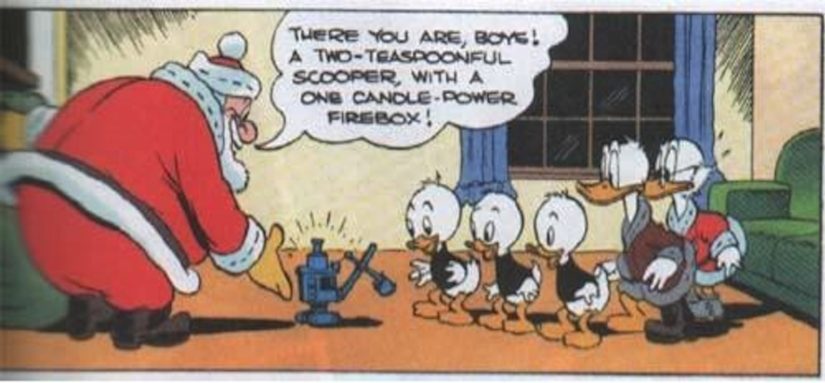
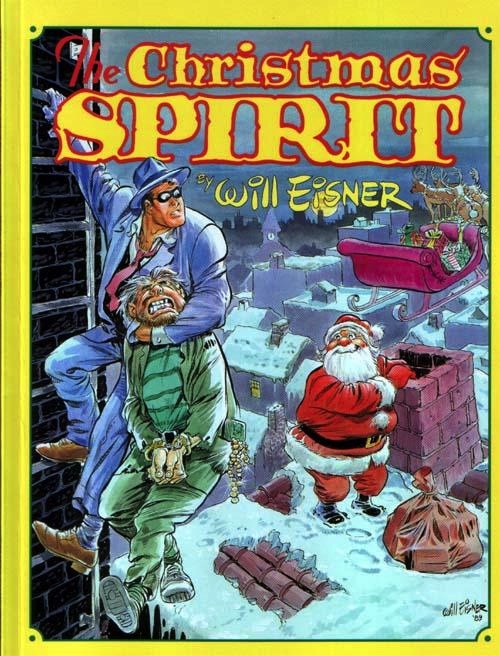


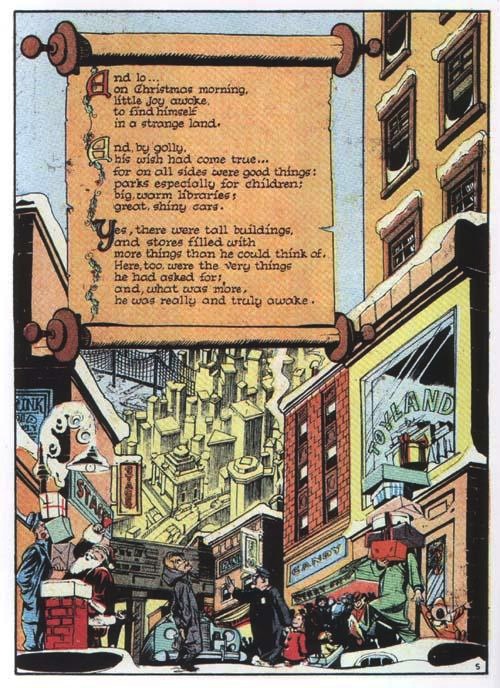
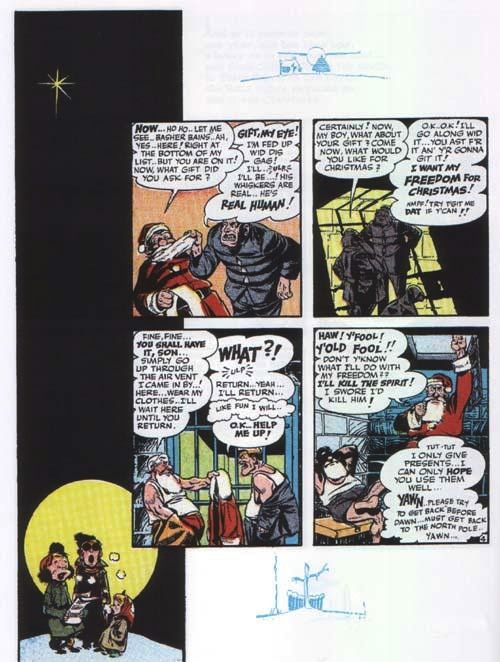
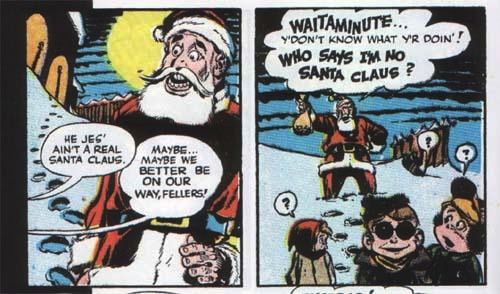
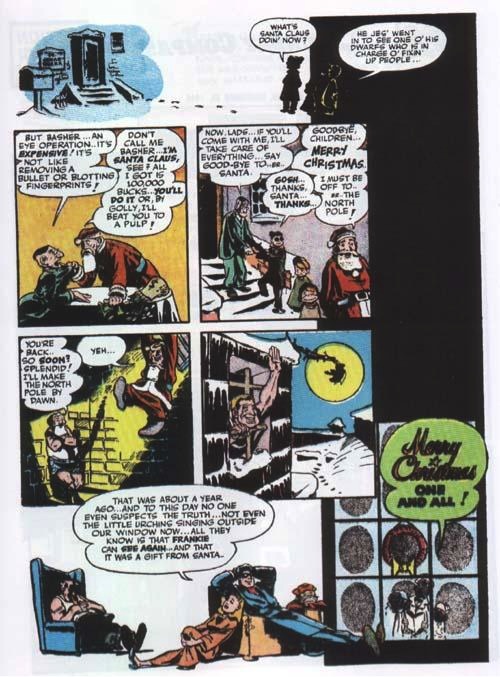
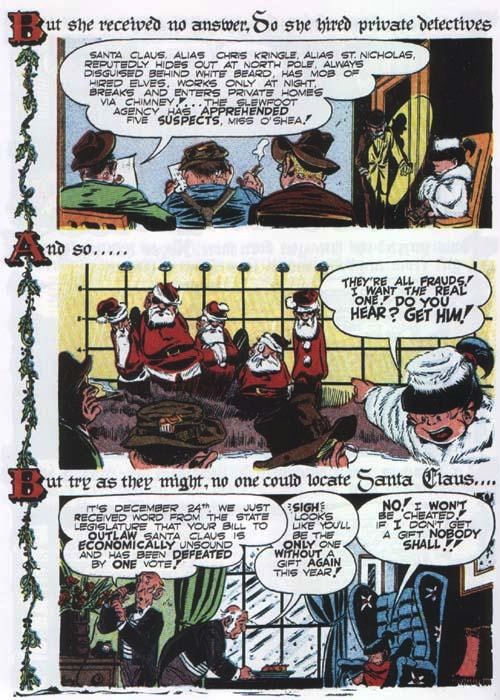
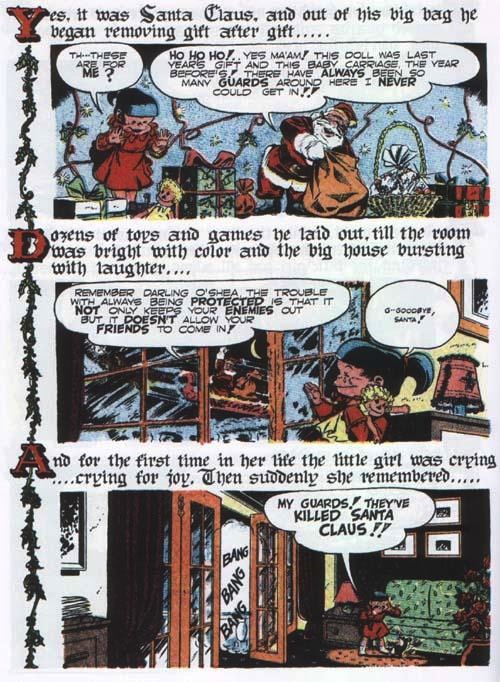
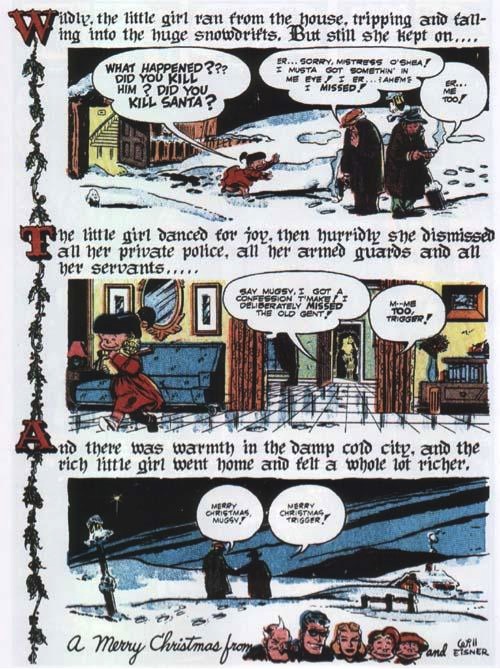

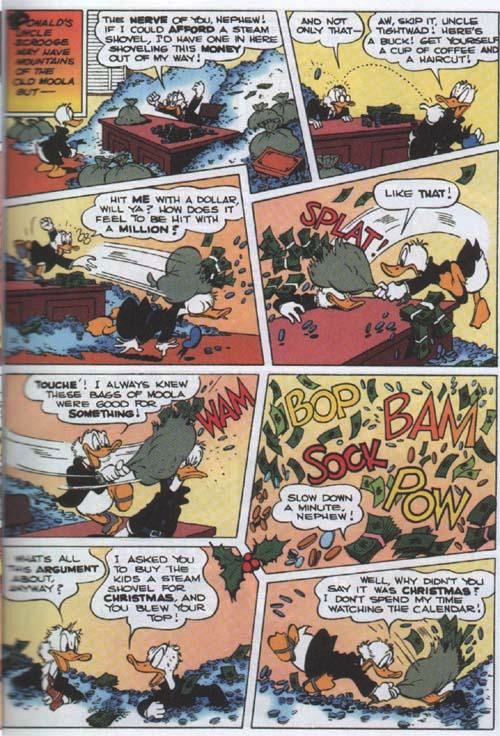
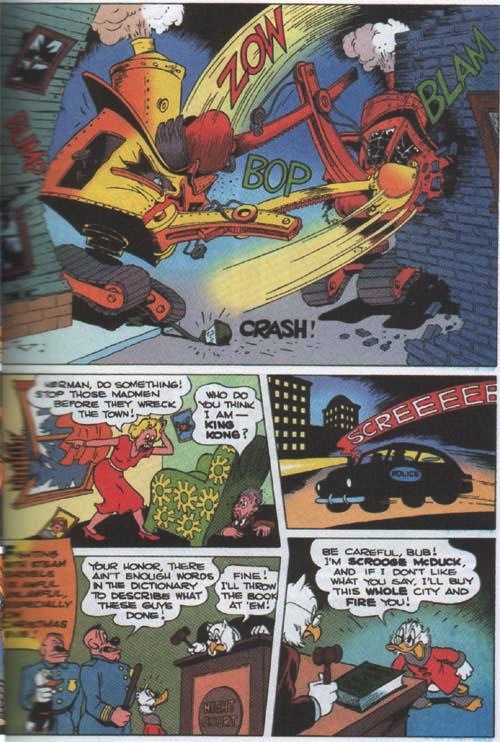
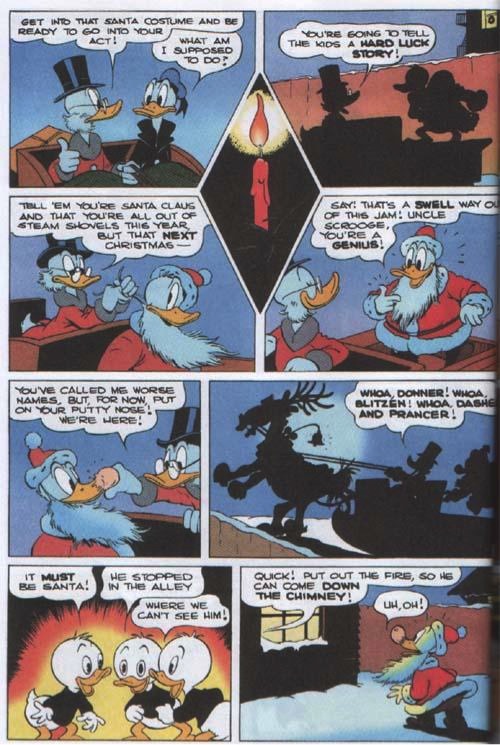
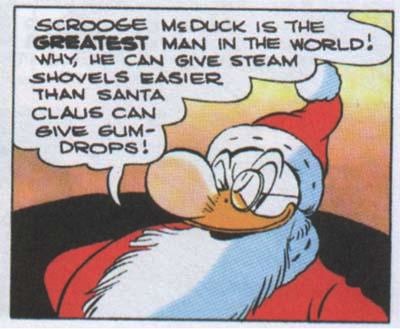
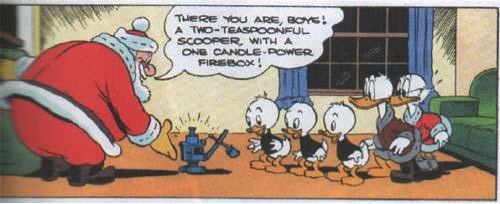

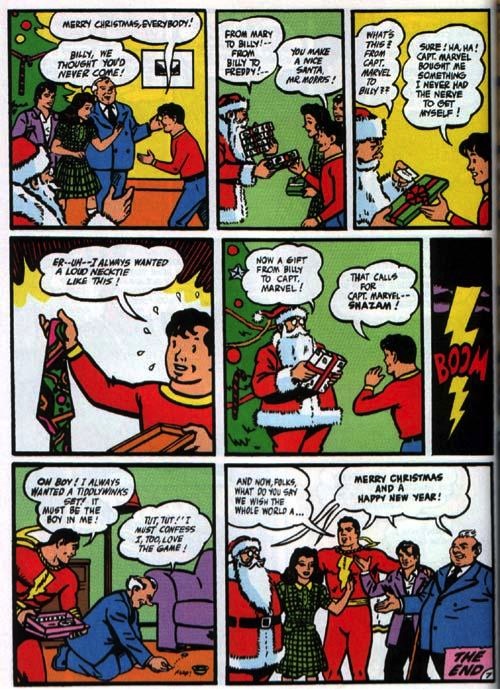

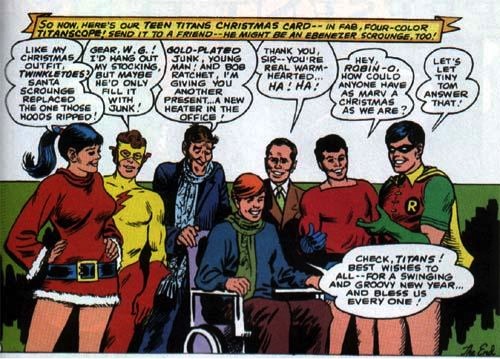
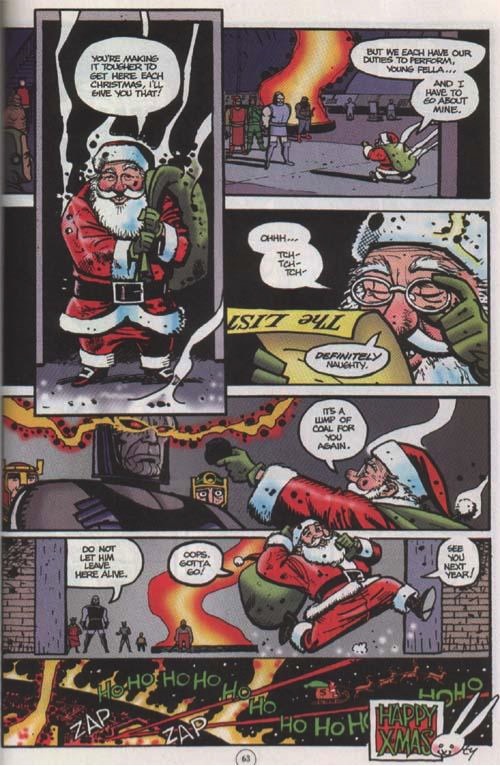

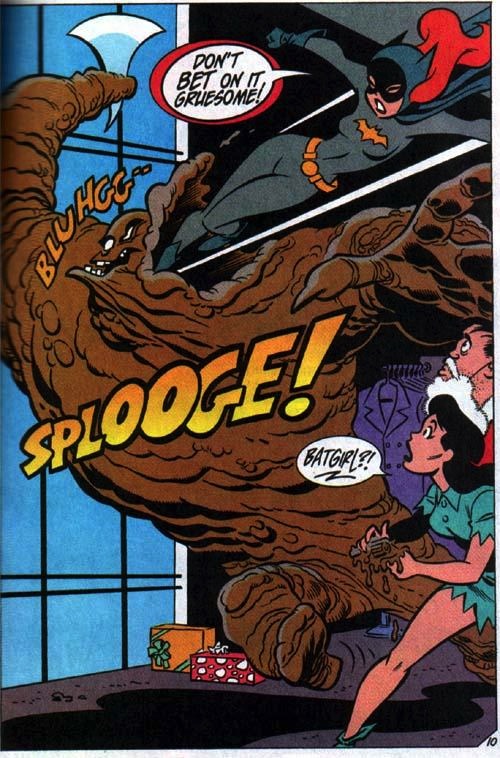





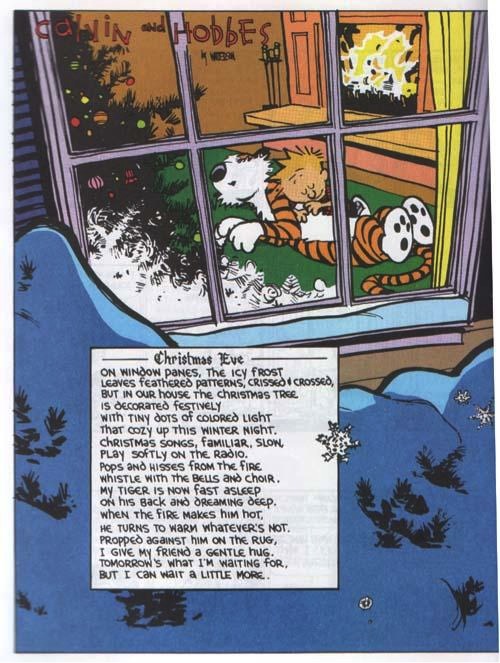

Comments are closed.